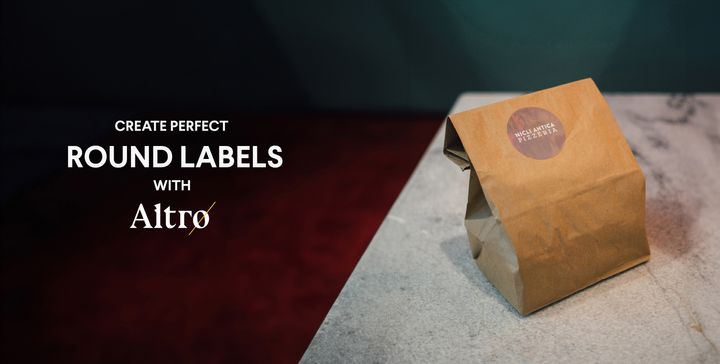The Ultimate Label Terminology Guide: Label Glossary for Modern Brands

Clear, accurate labelling is at the heart of effective packaging. Whether you’re a brand owner, designer, or production manager, understanding label terminology helps you communicate confidently, choose the right materials, and avoid costly revisions. To support your workflow, we’ve created a comprehensive, easy-to-navigate glossary of the most common label terms used across the packaging and printing industry.
Consider this your reference guide built to inform, strengthen decision-making, and streamline your projects from design to application.
Why Label Terminology Matters
As packaging becomes more innovative, the language used to describe materials, finishes, and production methods has evolved just as quickly. Having a strong grasp of essential terms allows you to:
- Collaborate more efficiently with designers, printers, and production teams
- Select appropriate materials for durability, compliance, and branding
- Ensure print files are set up correctly
- Improve product presentation and shelf impact
- Build packaging strategies with long-term consistency
When everyone on your team shares the same vocabulary, projects move faster, and the final product looks exactly as intended.
Altro Labels Glossary: Key Industry Terms Explained
1. Adhesive
The bonding agent is applied to the back of a label. Available in various types such as permanent, removable, repositionable, freezer-grade, and high-tack, depending on surface and environment.
2. BOPP (Biaxially Oriented Polypropylene)
A durable film substrate widely used for premium labels. It is water-resistant, tear-resistant, and available in white, clear, and metallic finishes.
3. Bleed
The area where artwork extends beyond the trim line to ensure clean, edge-to-edge printing without unintended white borders. Essential for accurate production.
4. CMYK (Cyan, Magenta, Yellow, Black)
The four-colour printing model is used in digital and flexographic printing. These inks combine to create full-colour images.
5. Dieline
A technical drawing that outlines the exact shape, cut lines, safe zones, and bleed areas of a label. Used by designers and production teams to ensure precision.
6. Finishes (Gloss, Matte, Soft-Touch, UV, Laminate)
Surface enhancements added to labels for protection and aesthetic appeal:
- Gloss: bright and reflective
- Matte: smooth and non-reflective
- Soft-touch: velvety, premium feel
- UV coating: high-shine accents
- Lamination: protective film layer for durability
7. Face Stock
The primary material on which the label is printed. Examples include paper, film, textured materials, kraft stock, and specialty substrates.
8. Lamination
A protective film is applied over printed labels to enhance resistance to scratches, moisture, oils, and handling.
9. Matrix
The excess material surrounding labels is removed after they are die-cut and removed during finishing. Helps ensure clean label edges.
10. Rewind Direction
The orientation of labels on a roll. Critical for compatibility with automated labelling equipment and proper application.
11. Roll vs. Sheet Labels
- Roll Labels: supplied on cores; ideal for automated or high-volume applications.
- Sheet Labels: supplied as flat sheets; suitable for small batches or manual labelling.
12. Permanent Adhesive
Designed for long-term bonding. Once applied, it adheres firmly and is difficult to remove without damage.
13. Removable Adhesive
Allows labels to be peeled away cleanly without leaving residue. Common for temporary products or reusable packaging.
14. Waterproof vs. Water-Resistant
- Waterproof Labels: built to withstand full water exposure (e.g., beverages, cosmetics, refrigerated goods).
- Water-Resistant Labels: tolerate light moisture but not prolonged contact.
15. Variable Data Printing (VDP)
A digital printing method that allows each label in a batch to feature unique data such as barcodes, serialized numbers, or personalized information.
16. White Ink
Used on clear, metallic, or tinted substrates to create opacity, enhance readability, and improve colour accuracy.
17. Substrate
The material surface labels are printed on paper, film, synthetic materials, and specialty stocks.
How to Use This Glossary
1. Incorporate these terms into your design briefs
Clear communication reduces errors and speeds up production.
2. Match materials to your product’s environment
Heat, humidity, oils, and handling requirements should shape your material choices.
3. Consult your print partner early
Altro’s team can guide you in selecting the best adhesives, laminates, and substrates for your application.
Conclusion: Build Packaging With Confidence
Understanding the language of labels empowers your team, improves communication, and ensures every product leaves a professional, consistent impression. With this glossary, you’re equipped to make informed decisions about materials, finishes, and printing techniques, all backed by Altro’s expertise in premium label production.
If you’d like help selecting the right materials or preparing your next project, Altro Labels is here to support you from concept to print.



